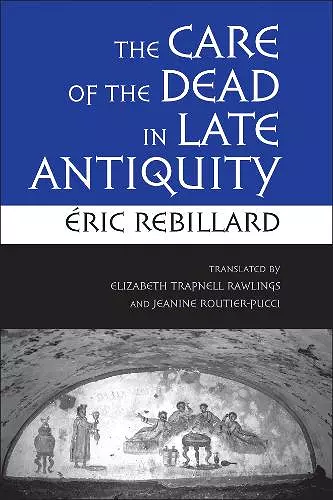The Care of the Dead in Late Antiquity
Éric Rebillard author Elizabeth Trapnell Rawlings translator Jeanine Routier-Pucci translator
Format:Paperback
Publisher:Cornell University Press
Published:6th Apr '12
Currently unavailable, and unfortunately no date known when it will be back

In this provocative book Éric Rebillard challenges many long-held assumptions about early Christian burial customs. For decades scholars of early Christianity have argued that the Church owned and operated burial grounds for Christians as early as the third century. Through a careful reading of primary sources including legal codes, theological works, epigraphical inscriptions, and sermons, Rebillard shows that there is little evidence to suggest that Christians occupied exclusive or isolated burial grounds in this early period. In fact, as late as the fourth and fifth centuries the Church did not impose on the faithful specific rituals for laying the dead to rest. In the preparation of Christians for burial, it was usually next of kin and not representatives of the Church who were responsible for what form of rite would be celebrated, and evidence from inscriptions and tombstones shows that for the most part Christians didn't separate themselves from non-Christians when burying their dead. According to Rebillard it would not be until the early Middle Ages that the Church gained control over burial practices and that "Christian cemeteries" became common.
In this translation of Religion et Sépulture: L'église, les vivants et les morts dans l'Antiquité tardive, Rebillard fundamentally changes our understanding of early Christianity. The Care of the Dead in Late Antiquity will force scholars of the period to rethink their assumptions about early Christians as separate from their pagan contemporaries in daily life and ritual practice.
Éric Rebillard amasses a vast array of second- through fifth-century Christian literature in an attempt to systematically dispel any notion that Church institutions had much to do with the dead bodies of their community. Cemetery space, unless it was inhabited by a saint, was not considered sacred, grave robbing was a civil matter, and belief in resurrection of the dead had little influence on the fate of the Christian corpse—these are just some of the conclusions reached in this important revisionist work.
* Religious Studies Review *The importance of Éric Rebillard's book lies in that it establishes beyond any doubt that in the early centuries the Church was not concerned with taking control of the care and commemoration of the dead, but treated these matters as being within the sphere of decisions taken by families and subject to established custom and law.
* Journal of Ecclesiastical Histo- Winner of A 2010 Choice Magazine "Outstanding Academic Title.
ISBN: 9780801477959
Dimensions: 235mm x 155mm x 14mm
Weight: 454g
240 pages